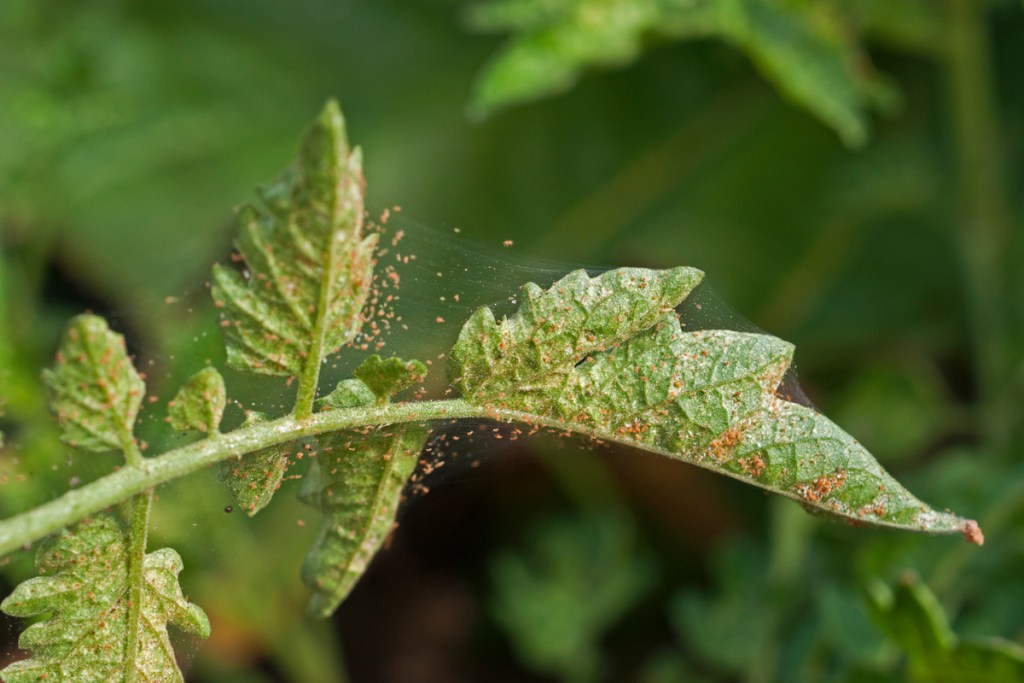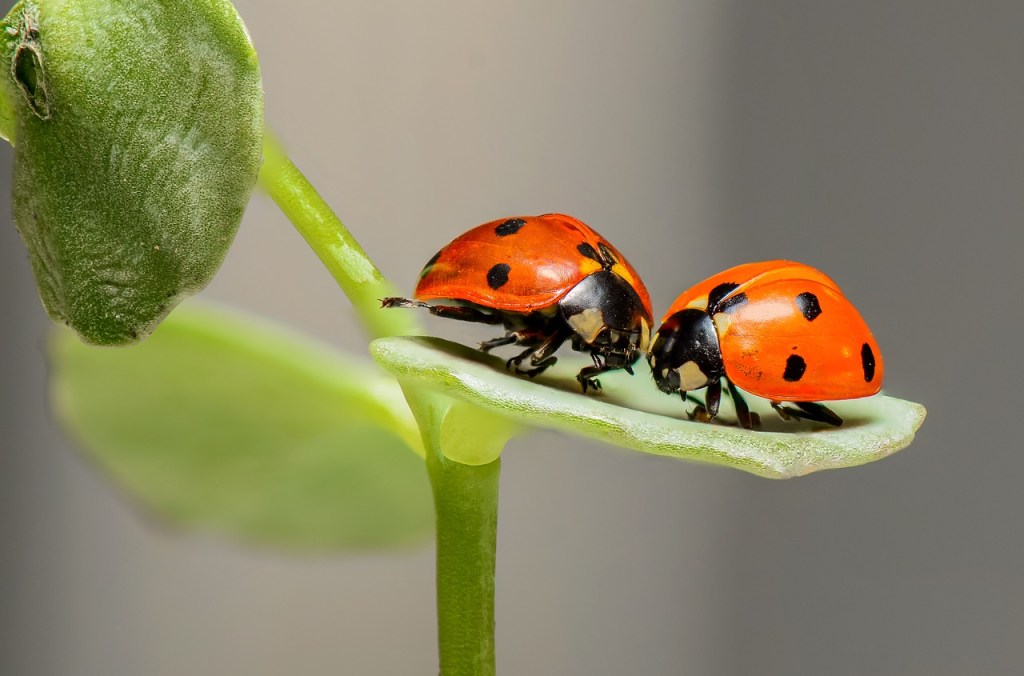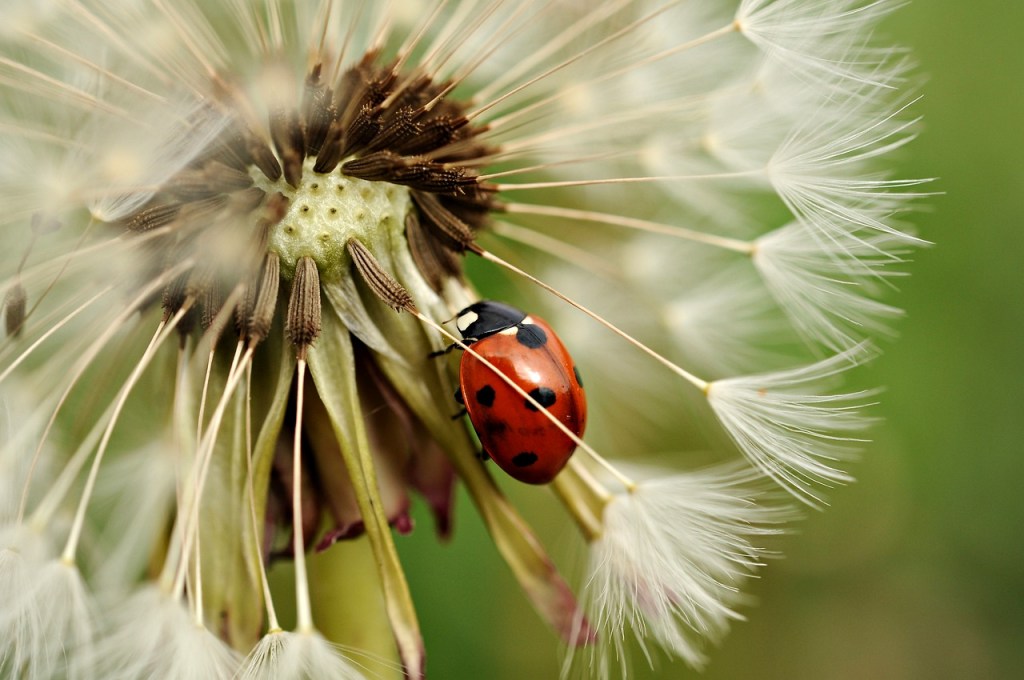For many gardeners, the battle against pests is a top priority — and a never-ending battle. This struggle is something most, if not all, gardeners can relate to. There are many methods and techniques for pest control, but some only work on specific pests, while others aren’t very accessible. Beneficial insects — such as ladybugs — that eat pest insects can save you a lot of time and effort, but knowing which ones eat the pest that’s troubling you can be tricky. But not to worry! We’re here to help. Here’s everything you need to know about spider mite pest control and how ladybugs can help.

What is a spider mite?
Spider mites are tiny pests that can cause big damage. True to their name, they’re arachnids, although they look more like insects than spiders. Spider mites will live on (and harm) many plants, including fruit trees, berry bushes, vines, and even some ornamental houseplants. In small numbers, they’re a nuisance, but warm weather with little to no wind causes an increase in population that can be devastating. This means spider mites, while existing in almost every state, are particularly troublesome for southern and southwestern states.
Due to their small size, spider mites can be difficult to spot. Instead, check your plants regularly for signs of damage. Spider mites drink the fluids from leaves, which results in the leaves showing lots of small light dots, called stippling. In a healthy plant, this stippling won’t have any real effect. However, in young, weak plants, it hinders photosynthesis, weakening the plant further. Leaves that are stippled may also begin to brown and curl at the edges.
In severe infestations, you may notice small webs, similar to what a spider might leave. These webs most commonly appear when a sizable population of spider mites is present. Spider mites reproduce quickly, so by the time the population reaches such sizes, it’s difficult to control. This makes spotting the early signs all the more important.

Do ladybugs eat spider mites?
Yes, ladybugs do eat spider mites, along with several other small pests. Ladybugs can be a great asset for pest control, since they’re voracious eaters and don’t damage plants. If you don’t have ladybugs already in your garden, you have two options. You can either get ladybugs from a specialty store and release them into your garden or lure in ladybugs from the surrounding area.
Luring ladybugs to your garden shouldn’t be too difficult if you already have spider mites in your garden. Ladybugs, like all animals, will go where there is food. However, ladybugs also eat pollen and flower nectar when there aren’t enough pests for them to eat. You can encourage ladybugs to move into your garden by planting some of their favorites, including dill, cilantro, cosmos, and tansy.
Planting these flowers can also be helpful if you plan on releasing ladybugs. This is because one of the two main issues with releasing ladybugs into a garden is that they simply might not stay there. Making sure they have plenty of food and a water source, releasing them near the plants with the heaviest mite infestation, and releasing them at night can significantly increase the odds that they’ll stay.
The other main issue with releasing ladybugs is that if they have been improperly caught, bred, or raised, then they may have diseases they could pass to any wild ladybugs in your area. Getting your ladybugs from a reputable brand or specialty store helps ensure that you get healthy ladybugs and don’t inadvertently endanger the ladybugs that already live in your area.

What other methods work to control spider mites?
Spider mites are soft-bodied pests, which makes them fairly easy to deal with as long as you know where they are. Insecticidal soaps made from potassium salts of fatty acids are a common method. You can find them in most gardening and lawn care stores, or you can make your own from vegetable oil and a natural, bleach-free soap. Neem oil is another natural pest control method that works on spider mites. It’s made from the neem tree, also called Indian lilac. The neem tree is a relative of mahogany native to India and most countries in Africa.
Since spider mites are so small, they can also be blown off a plant with water or air. A water hose can be used to knock spider mites and their eggs off of plants. Adjust the water pressure and test it before spraying to avoid spraying too hard and harming the plant. Bear in mind that this method isn’t ideal for delicate plants or those that hate wet leaves, such as succulents.
Spider mites are obnoxious little pests, but with these tips, they don’t have to spell disaster for your garden. It’s best to act quickly to keep them from establishing a permanent home on your plants, so keep a sharp eye out for stippling or webbing. Luring ladybugs to your garden can be a great preventative measure, and releasing ladybugs or spraying your plants with insecticidal soap, neem oil, or even just your water hose can keep them at bay if they’re already present.
Editors' Recommendations
- 3 incredible reasons why you should be using coffee grounds in your garden
- The truth about holly leaves – interesting facts you might not know
- Do you live in climate zone 10? Here’s our guide to choosing the perfect climate zone 10 plants
- Gardening 101: 7 easy seeds to grow in cups for a tiny, adorable, and low-maintenance indoor garden
- These are the 10 best gardening shows to stream right now




